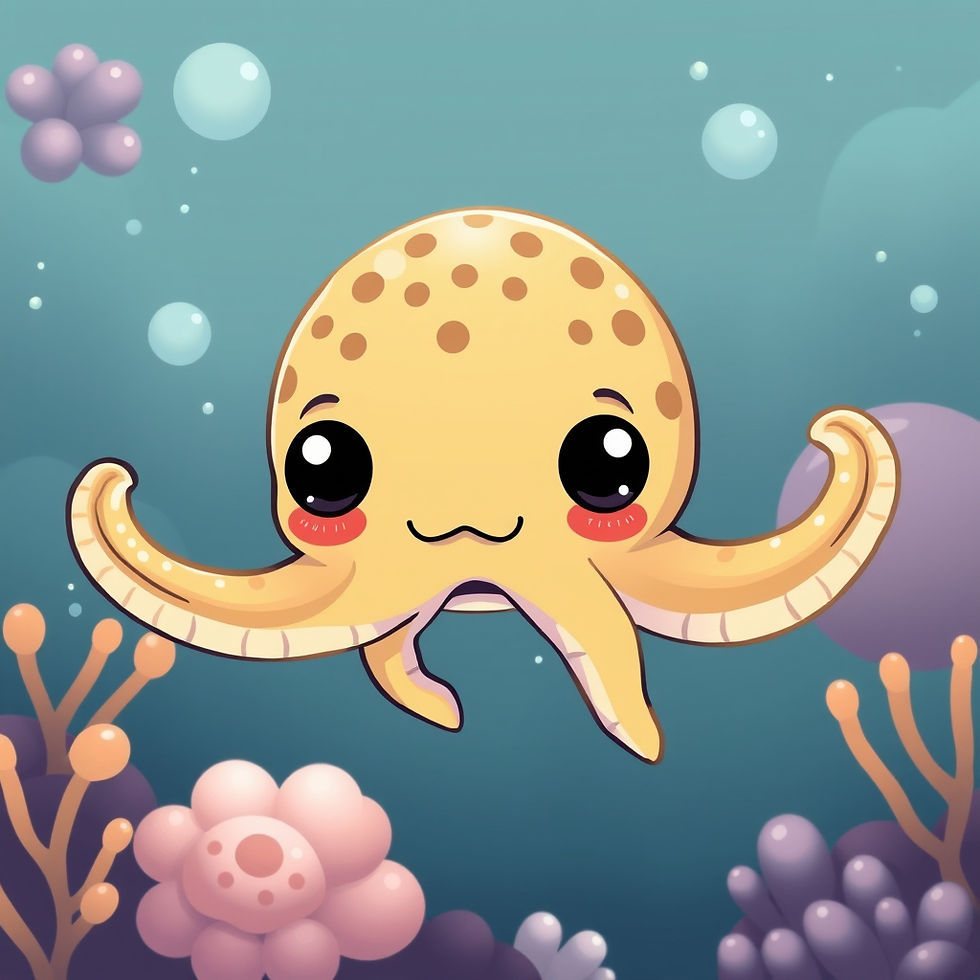Seahorse Facts for Kids: The Ocean's Most Magical Fish
- spencer655
- Nov 2
- 4 min read
Seahorses are some of the most enchanting and mysterious creatures swimming in our oceans! With their horse-like heads, curly tails, and upright swimming style, these magical fish look like they swam straight out of a fairy tale. But don't let their delicate appearance fool you...seahorses are incredible survivors with some of the most amazing superpowers in the animal kingdom.
What Are Seahorses?
Seahorses are truly unique fish that break all the rules of what we think fish should look like:
There are about 46 different species of seahorses around the world.
Their scientific name is Hippocampus, which means "horse caterpillar" in Greek.
Seahorses are bony fish, not mammals, even though they look nothing like typical fish.
They're the only fish that swim upright instead of horizontally.
Seahorses have no stomach—food goes straight to their intestines!
"Seahorses are so unique that when scientists first discovered them, they weren't sure if they were fish, insects, or something completely new!"
Where Do Seahorses Live?
Seahorses are pretty picky about their neighborhoods—they need just the right conditions to thrive.
They live in warm, tropical and temperate waters around the world.
Seahorses prefer shallow coastal areas where they can hide easily.
You'll find them around coral reefs, seagrass beds, and mangrove forests.
They love areas with gentle currents since they're not strong swimmers.
Seahorses use their prehensile tails to grab onto plants and coral to avoid being swept away.
How Big Are Seahorses?
Seahorses come in a surprising range of sizes, from tiny to relatively large:
The smallest seahorse is the dwarf seahorse, measuring less than 1 inch (2.5 cm) tall.
The largest seahorse is the big-belly seahorse, which can grow up to 14 inches (35 cm) tall.
Most seahorses are between 2-8 inches (5-20 cm) in height.
They're measured by height, not length since they swim upright.
Baby seahorses are called fry and are incredibly tiny when born.
What Do Seahorses Eat?
Seahorses are carnivorous hunters with some pretty amazing feeding techniques:
They eat tiny shrimp, small fish, plankton, and other small crustaceans.
Seahorses are ambush predators—they wait perfectly still for prey to swim by.
They use their long snouts like straws to suck up food.
Seahorses can eat up to 3,000 pieces of food per day!
They need to eat constantly because they have no stomach to store food.
Their eyes can move independently, so they can watch for food and predators at the same time.
"A seahorse's snout works like a powerful vacuum cleaner—they can suck up prey from over an inch away!"
How Do Seahorses Swim?
Seahorses have a completely unique swimming style that sets them apart from every other fish:
They swim upright using their dorsal fin (back fin) that flutters up to 35 times per second.
Seahorses are terrible swimmers—they're one of the slowest fish in the ocean.
They can only swim about 5 feet per hour on average.
Their pectoral fins (side fins) help them steer and move up and down.
Instead of swimming long distances, they prefer to hitchhike on floating seaweed.
Strong currents can actually exhaust seahorses to death, so they stay in calm waters.
How Long Do Seahorses Live?
Seahorse lifespans vary quite a bit depending on their size and environment:
Smaller seahorses typically live 1-4 years in the wild.
Larger seahorse species can live 4-6 years or more.
In captivity with proper care, some seahorses live up to 7 years.
Their lifespan depends on water quality, food availability, and predators.
Baby seahorses have a very low survival rate—less than 1% make it to adulthood.
Are Seahorses Endangered?
Unfortunately, many seahorse species face serious threats in the wild:
Over 20 million seahorses are caught each year for traditional medicine and souvenirs.
Habitat destruction from coastal development threatens their homes.
Water pollution affects their food sources and health.
Climate change is warming and acidifying their ocean habitats.
Several species are considered vulnerable or near threatened.
Conservation efforts are working to protect seahorse habitats and regulate fishing.
Cool and Weird Seahorse Fun Facts
Seahorses have excellent eyesight and can see in color.
They can change colors to match their surroundings like chameleons.
Seahorses have no teeth—they swallow their food whole.
They're monogamous, meaning they mate with the same partner for life.
Seahorses perform a beautiful courtship dance that can last for hours.
They have no scales—instead, they have bony plates under their skin.
A seahorse's tail is prehensile, meaning it can grab things like a monkey's tail.
They can rotate their eyes independently in different directions.
Seahorses are terrible parents—they provide no care for their babies after birth.
The fastest seahorse can only swim about 5 feet per hour.
They have no stomach acid, so food passes through them very quickly.
Seahorses can survive in both saltwater and brackish water.
Their dorsal fin can beat up to 70 times per second in some species.
Seahorses have been around for about 40 million years.
They're considered symbols of good luck in many cultures.
What Makes Seahorses So Special?
Seahorses prove that nature is full of incredible surprises. From their male pregnancies to their horse-like appearance, these amazing creatures show us that being different isn't just okay—it's absolutely magical. Seahorses have survived for millions of years by being perfectly adapted to their unique lifestyle, making them some of the ocean's most treasured and mysterious inhabitants.
"Seahorses remind us that the most extraordinary creatures often come in the most unexpected packages!"
These enchanting fish continue to fascinate scientists and ocean lovers around the world. By learning about and protecting seahorses, we help ensure that future generations will be able to marvel at these incredible ocean unicorns for years to come.
Cute seahorse cartoon:



